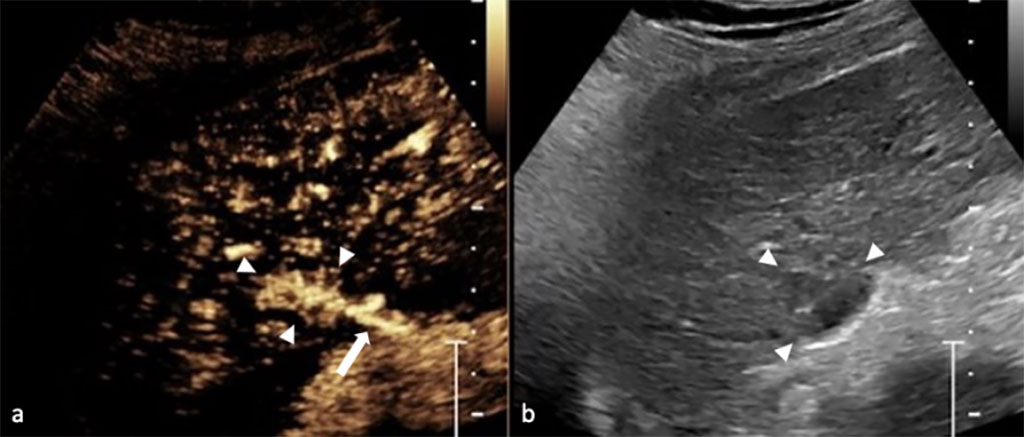Enhanced Ultrasound Superior to MRI for Diagnosing Certain Liver and Kidney Tumors
Posted on 27 Feb 2023
Contrast-enhanced ultrasound (CEUS) is a non-invasive imaging tool that is routinely used across the world to identify and characterize cancers, diagnose heart and vascular disease, monitor chronic gastro-intestinal diseases and therapy. Ultrasound contrast agents are administered intravenously to enhance the images produced by ultrasound scans, enabling the visualization of abnormal microvascular blood flow patterns in real time. Now, two new studies have revealed that CEUS is more accurate and reliable than MRI for examining certain liver and kidney nodules.
The two new studies were highlighted by the International Contrast Ultrasound Society (ICUS, Chicago, IL, USA; www.icus-society.org), a non-profit medical society dedicated to advancing the medically appropriate use of CEUS to improve patient care and outcomes. In the liver CEUS study, which followed 196 patients for two years, the researchers found that CEUS scans are at least equivalent if not superior to MRI for evaluating these liver lesions, and CEUS should be the first investigation for nodules found on surveillance for liver cancer. The study showed that CEUS offers superior sensitivity when compared to MRI (81% vs. 64%) for the diagnosis of malignancy, without compromising specificity (92% vs. 93%). In addition, CEUS was more likely than MRI to reproduce and characterize the nodule found on screening (97% vs. 78.5%). The liver study represents the first prospective comparison of CEUS and contrast-enhanced MRI for assessment of newly-discovered liver nodules. Based on these findings, the researchers have called upon the American Association for the Study of Liver Diseases (AASLD) to include CEUS in its liver imaging guidelines, along with MRI and CT. However, MRI still remains an essential tool for managing patients with malignant tumors, particularly for staging these tumors prior to treatment, according to the researchers.

“We found that CEUS is a better and less expensive first-step evaluation for newly-discovered liver nodules,” said Dr. Stephanie Wilson, principal investigator of the liver CEUS study. “CEUS found malignant or pre-malignant diagnoses that would likely have been missed or delayed if we had not used CEUS in these patients. In addition, CEUS quickly and reliably identified benign lesions and pseudo-lesions, sparing these patients the costs and risks associated with unnecessary downstream testing and procedures.”
Meanwhile, the kidney CEUS study reviewed clinical data over a 10 year period to assess the accuracy of CEUS diagnoses of benign kidney nodules in 341 patients. Their blinded analysis found that none of the CEUS diagnoses changed during that period.
“Our data confirm that when CEUS determines a kidney mass is benign, the mass is benign and no further follow up is needed - sparing the patient from unnecessary downstream tests, anxiety and costs,” according to Dr. Richard G. Barr, the lead author of the kidney CEUS study. “It is important to remember that ultrasound contrast agents do not contain iodinated dye and do not harm the kidneys, making CEUS the examination of choice for patients with renal insufficiency.”
“In addition, CEUS allows for improved visualization of enhancement patterns in real time, the thin slice thickness of CEUS allows for evaluation of small nodules, multiplanar imaging allows for improved visualization and confirmation of enhancement, and multiple doses may be used during the same examination to provide an opportunity to image the lesion thoroughly,” Dr. Barr added. “Further, due to radiation exposure associated with CT, we believe CT should not be used as the first line imaging modality for assessing cystic lesions that are most probably benign in character.”
Related Links:
ICUS






 Guided Devices.jpg)







